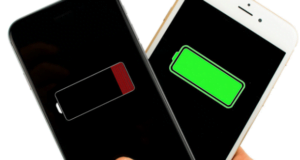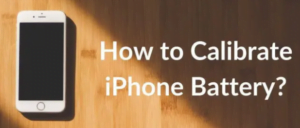How to calibrate an iPhone battery in 8 easy steps
How to Calibrate an iPhone Battery in 8 Easy Steps: The material properties of Li-ion batteries require constant use to maintain peak performance.
– How to calibrate iPhone battery in 8 easy steps –
For this reason, Apple recommends that you drain and recharge your battery once a month.
What is battery calibration?
Battery calibration is a way to correct incorrect battery statistics and show incorrect battery life.
This process includes resetting the battery statistics so that your phone shows the actual percentage of battery remaining. While battery calibration is an important part of iPhone maintenance;
Many users do not know its usefulness, when to calibrate the battery and how to do it correctly. So let’s get to know the process in detail
Why calibrate an iPhone battery?

Ideally, you should calibrate your battery once a month and also after every OS update. Battery calibration does two things:
- Conditions the battery.
- Helps the software calculate the battery life range.
Any time you notice that battery life has decreased, battery calibration can fix battery life issues. It’s all about ion battery technology.
These ions keep moving as the battery is periodically charged and discharged. Most modern batteries are lithium-ion and require constant use to maintain peak performance.
That is why it is highly recommended to discharge and recharge the battery once a month.
The program calculates the available battery charge. There is a high chance that battery-intensive features are part of a new iOS update.
While these updates improve battery life, it’s recommended that you calibrate your iPhone battery to keep your battery in good working order.
It has been established without a doubt that the calibration of a battery increases its life, just as the calibration of a mechanical engine improves its performance.
Step by step battery calibration
The following process is what I consider to be the gold standard for iPhone battery calibration. For some, it may not be possible to complete all of these steps.
If you’re a call attendant or hopelessly dependent on your iPhone, you may not be able to turn off your iPhone overnight or even for several hours.
At a minimum, you need to drain your battery until the device turns off, charge your iPhone to 100%, and reset it by holding the sleep/wake and home buttons until you see the Apple logo.
- Use your iPhone until it turns off automatically. If your battery life is around 0% and you want to drain it faster, turn on your flashlight, turn your screen brightness all the way up, and play a video, preferably streamed from the internet.
- Leave your iPhone overnight to drain the battery.
- Plug your iPhone into a power outlet and wait for it to turn on. Be sure to use an Apple-supplied charger or a charger of the same capacity and amperage.
- While holding the sleep/wake button, slide your finger across the “slide to turn off” screen.
- Let your iPhone charge for at least 3 hours. Older iPhones should be charged within 5 hours. It does not display a charging progress indicator when your iPhone is turned off.
- With the charging cable still on, press the sleep/wake button for about a second to turn on your iPhone.
- When the iPhone boots up, hold down the sleep/wake and home buttons until you see the Apple logo.
- If you have a newer iPhone without a physical home button, hold down the volume up button and the sleep/wake button.
- When your iPhone is back online, unplug the charging cable.
Please leave a comment an


